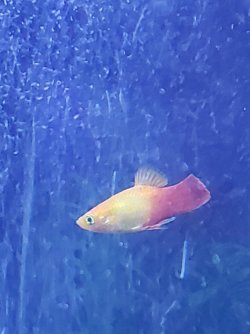Vignette
New Member
- Joined
- Nov 24, 2019
- Messages
- 12
- Reaction score
- 0
Hello. So I have a 20 gal hex freshwater tank. I cycled it with some gravel and a cave from my old tank for 3 weeks. A couple of days ago I added 2 platies. The man at the aquarium store said it’s help cycle the tank and these fish were hardy. They seem to be adjusting fine to the water, I added them in slowly when I got them home. Anyway, the next day the orange one lost half his tail. It was ripped and the remaining half of his tail fin was dangling by a thread. I thought the other but him but I’ve been carefully observing and there is zero aggression between them. So..what the heck could make his fin rip off? It was gone in 4 hours . Now the last couple of days he’s not eating. I’m watching my water and the ammonia is only at 10ppm, nitrates and nitrites are low. Water is clear. I have false plants and a few decorations. Maybe the coral got him? I’m so stumped and was hoping you could help. I’m hesitant to add any fin rot antibiotics as a precaution because I don’t want to ruin my cycling. Any help is appreciated.



